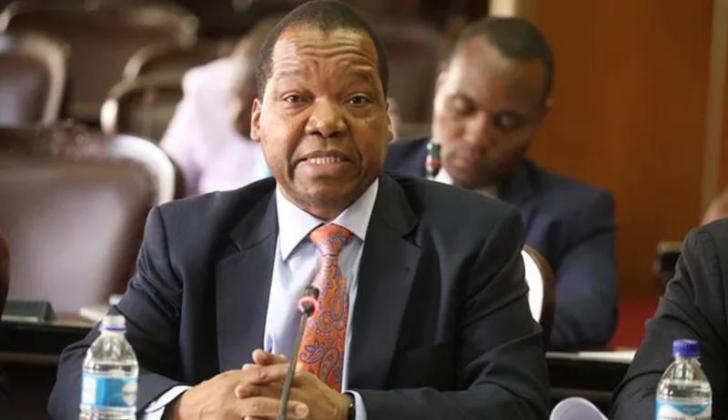News / National
Mutapa clarifies Kuvimba's US$1,9 billion acquisition
25 Apr 2025 at 06:40hrs |
0 Views

The Government of Zimbabwe has provided clarity on the funding structure used for its acquisition of a 35 percent stake in Kuvimba Mining House (KHM), the country's largest mining asset, by the Mutapa Investment Fund (MIF), Zimbabwe's sovereign wealth fund. This acquisition, which has raised the Government's investment in KHM to 100 percent, is valued at US$3.2 billion, following an independent evaluation of the company.
The US$1.9 billion used to purchase the 35 percent stake was funded through Treasury Bonds with a tenure of up to 10 years, which were issued as a loan to the Mutapa Investment Fund. The transaction did not involve any immediate cash payment, as the Treasury Bonds have not yet matured. Instead, MIF will utilize the assets of KHM to generate revenue and repay the loan well before the bonds reach maturity, thereby mitigating any fiscal risk associated with the bond arrangement.
In a statement released yesterday, MIF CEO Dr. John Mangudya addressed misinformation circulating on social media about the funding structure of the deal. He confirmed that the Treasury Bonds were issued with a repayment period of 10 years, including a three-year grace period, and that MIF would be required to repay the loan during this time.
"The US$1.9 billion represents Treasury Bonds with a 10-year tenure, issued to purchase 35 percent of Kuvimba Mining House. These Treasury Bonds were issued as a loan to MIF, with a grace period of three years," Dr. Mangudya explained. He added that the transaction's value is anchored on the future value of the Treasury Bonds, discounted at a rate of 40 percent, and based on the independent valuation of KHM's assets, including its mining operations at Freda Rebecca Gold Mine, Shamva Gold Mine, Jena Mines, Sandawana Mine (lithium), and others.
Following this acquisition, the Government's stake in KHM has grown from 65 percent to 100 percent, with the shares now held across several entities under MIF's management. These include a 63 percent stake held by MIF, 12.5 percent held by Datvest Nominees (representing compensation for former farmers), and smaller portions held by the Insurance and Pensions Commission, War Veterans, Women and Youth groups, and other state agencies.
Dr. Mangudya also discussed how MIF intends to manage the loan repayment process. He said the strategy to reduce fiscal risk involves maximizing the value of KHM's mineral assets, particularly through joint ventures and increased mineral production, especially gold, which has seen high international prices. This approach will allow MIF to generate the necessary funds to settle the Treasury loan during the grace period, with plans to buy back shares and cancel them over time.
The Mutapa Investment Fund, established by an Act of Parliament in 2014, is tasked with managing Zimbabwe's sovereign wealth and overseeing investments in various sectors, including minerals, energy, ICT, agriculture, and financial services. It was capitalized in 2023 with the transfer of selected State-Owned Enterprises (SOEs) and other government investments.
The successful acquisition of Kuvimba Mining House further solidifies the Government's control over a significant part of the country's mining sector, which continues to be a critical driver of economic growth.
The US$1.9 billion used to purchase the 35 percent stake was funded through Treasury Bonds with a tenure of up to 10 years, which were issued as a loan to the Mutapa Investment Fund. The transaction did not involve any immediate cash payment, as the Treasury Bonds have not yet matured. Instead, MIF will utilize the assets of KHM to generate revenue and repay the loan well before the bonds reach maturity, thereby mitigating any fiscal risk associated with the bond arrangement.
In a statement released yesterday, MIF CEO Dr. John Mangudya addressed misinformation circulating on social media about the funding structure of the deal. He confirmed that the Treasury Bonds were issued with a repayment period of 10 years, including a three-year grace period, and that MIF would be required to repay the loan during this time.
"The US$1.9 billion represents Treasury Bonds with a 10-year tenure, issued to purchase 35 percent of Kuvimba Mining House. These Treasury Bonds were issued as a loan to MIF, with a grace period of three years," Dr. Mangudya explained. He added that the transaction's value is anchored on the future value of the Treasury Bonds, discounted at a rate of 40 percent, and based on the independent valuation of KHM's assets, including its mining operations at Freda Rebecca Gold Mine, Shamva Gold Mine, Jena Mines, Sandawana Mine (lithium), and others.
Dr. Mangudya also discussed how MIF intends to manage the loan repayment process. He said the strategy to reduce fiscal risk involves maximizing the value of KHM's mineral assets, particularly through joint ventures and increased mineral production, especially gold, which has seen high international prices. This approach will allow MIF to generate the necessary funds to settle the Treasury loan during the grace period, with plans to buy back shares and cancel them over time.
The Mutapa Investment Fund, established by an Act of Parliament in 2014, is tasked with managing Zimbabwe's sovereign wealth and overseeing investments in various sectors, including minerals, energy, ICT, agriculture, and financial services. It was capitalized in 2023 with the transfer of selected State-Owned Enterprises (SOEs) and other government investments.
The successful acquisition of Kuvimba Mining House further solidifies the Government's control over a significant part of the country's mining sector, which continues to be a critical driver of economic growth.
Source - the herald
Join the discussion
Loading comments…





























